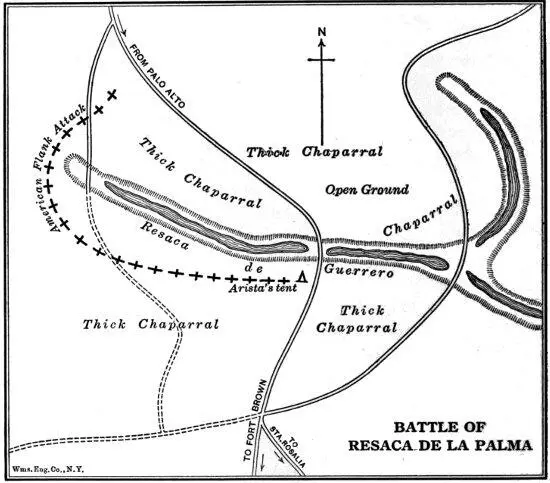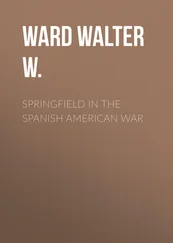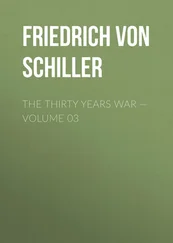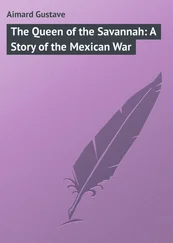It was now about seven o’clock. The Americans had lost five killed and forty-three wounded, and the Mexicans probably seven times as many. The afterglow of sunset lighted up the dun clouds of smoke. Darkness was close at hand. Necessarily, therefore, the struggle ended; and while the Mexicans retired through the chaparral to the low eminence behind the original position of their right wing, and there camped in order of battle, the Americans bivouacked where they stood, or in the fitful glare of the still burning grass gave attention to such of both armies as could be discovered lying on the field. At last the prairie fire burned out; the smoke of battle drifted away; the full moon appeared; and the tired troops, watched over by pacing guards, slept between the stacks of arms like images.14
Important moral results had been gained by the Americans, but they were not aware of the fact, and expected the battle to be resumed. At about seven o’clock the next morning, however, as the light mist slowly dissolved, their astonished eyes beheld the Mexican line gliding off into the road; and presently, like the tail of a huge serpent, its rear wound away into the chaparral, and vanished. Taylor gazed and reflected, moved a short distance, waited to ascertain through a party of dragoons that it was a genuine retreat, consulted with some of his principal officers, and then decided on pursuit; but the forenoon had to be spent in erecting breastworks and planting four heavy cannon to defend the train, which he now saw should be left behind; and he merely sent forward a composite force of 220 men, under Captain McCall of the Fourth Infantry, to harass the Mexican rear.15

Arista turned this delay to good account. The chaparral and woods that his troops had been seen to enter extended with some interruptions to the Rio Grande, a distance of approximately seven miles; and two hours before noon, after marching about halfway through it, he stopped at the Resaca de Guerrero. The Resaca was an ancient channel of the river, but it now consisted merely of a shallow, muddy ravine somewhat in the shape of a bow, several hundred feet wide and three or four feet deep at the banks, lying substantially east and west across the route, with its concave side toward Palo Alto. At the bottom of it, both to the right and to the left of the road, lay narrow ponds, and the space between the water and the banks was rather closely filled with bushes and small trees. Facing round here, Arista planted three or four guns at the right, or east, of the road from Palo Alto where it approached the Resaca, two at least—hidden with branches of trees—on the southern bank of the Resaca, and other pieces at suitable points toward his left. The infantry were placed in two wings divided by the road, with much the greater weight on the right hand, some of the troops taking position just in the rear of the ravine, some behind its northern bank, and some in the chaparral still farther forward. The headquarters tent was pitched in a small clear space or placeta about 500 paces back on the left of the road, and Torrejón’s cavalry halted in the same road still farther away; while Canales with two guns, placing himself on the left a considerable distance back from the Resaca, guarded a cross-road leading to Arista’s rear.16
The Mexican position, besides covering every line to Fort Brown, offered a number of other advantages. It did not call for much use of artillery, and therefore neutralized Arista’s deficiency in cannon ammunition. The woods made it impossible for the Americans to employ that dreaded arm effectively. The bank of the Resaca formed a natural breastwork, and it seemed likely that the troops, protected in this manner, would be confident and firm. But evidently a bold and enterprising enemy could take advantage of the woods to conceal his movements; and evidently, too, Arista’s main batteries could fire only in the direction of the road, since there were Mexicans in advance of the Resaca both to right and to left. Another handicap lay in the impossibility of surveying the field and manoeuvring troops—particularly the cavalry; the soldiers, unable to see far, lacked that sense of union and support which Mexicans peculiarly needed; and the want of reserves, though to a certain extent a part of the Fourth Infantry stationed on the right behind the Resaca could act as such, was an additional source of weakness.16
A still more serious feature of Arista’s situation was the condition of his troops. Many, and probably most of them, had not eaten for more than twenty-four hours. The sufferings they had witnessed and the neglect of their fallen comrades had worked upon their feelings. The dreadful effectiveness of the American artillery had been profoundly discouraging; many of their officers had proved unworthy of confidence; and above all, accustomed to the duplicity of Mexican leaders and unable to understand their general’s inactivity the day before, many concluded that Arista, who was accused of seeking American support for his alleged revolutionary scheme, had betrayed them. This idea, if we may trust common sense and Mexican intimations, was suggested or at least encouraged by Ampudia himself; and the coöperation of all these depressing influences had spread a general conviction through the army by the forenoon of May 9 that a great disaster would befall it that day. A few, it was said, broke their weapons in despair; and utter dejection could be read in the faces of every corps. Some reinforcements were drawn from the city, but they did not materially improve the situation.16
Taylor, then, advancing at about two o’clock, after detaching most of the Artillery Battalion and perhaps Kerr’s dragoons to guard the train, moved forward to the edge of the woods, and halted at what was called the Resaca de la Palma to await information. The advance corps under McCall, which consisted principally of the light companies of the first brigade under Captain C. F. Smith, was now feeling its way toward the enemy. At a little after two o’clock, turning a bend in the road, it found cannon in front. Instantly they fired. About half a dozen Americans fell, and the rest quickly withdrew. At three o’clock McCall’s report arrived at headquarters. Taylor pushed on immediately, and in about an hour came up with the advance party. Ringgold’s battery, now commanded by Lieutenant Ridgely, was sent forward on the road, and McCall’s command, thrown into the chaparral on both sides, began a slow and painful advance through the bushes. Almost immediately it found itself in contact with the enemy.16
Under such circumstances McCall could give the battery no support, of course, and the only reasonable expectation was that Ridgely’s men and horses would be shot from the woods, and his guns be taken. That, however, made no difference to him. His orders were to advance, and advance he would. Once a body of lancers charged his guns, but by a combination of courage, skill and good luck he routed it. Some of the Mexican artillery seems to have moved up the road a little way after McCall retired; but Ridgely, pushing on even into the very smoke of the enemy’s cannon, drove them in spite of stubborn resistance beyond the edge of the Resaca, and then sent back for troops to help him capture them. When the battle became more general he continued to fire upon the Mexican batteries; and, as far as he could without endangering Americans, he also swept the woods with canister, frightening the enemy with a terrible noise in the tree-tops that reminded them of the slaughter at Palo Alto.16
To right and to left the battle soon raged. All the Americans on the ground, numbering about 1700, were put in. No general guidance could be exercised. “Chance was the lord of all save the good right arms” of the troops, wrote an officer. In such woods and thickets lines could not be formed. Even companies found it impossible to remain intact. A field officer was no more than a captain, and a captain no more than a subaltern. All got into the work promptly, and all did their best when there. As fast as they could, singly or in little squads, they pushed on, cheering and shouting. Often it required one’s utmost exertions to squeeze through or hack through the dense and thorny chaparral under pelting showers of bullets. Now there was shooting, and now the cold steel struck fire. “My orders was to make free use of the bayonet,” said the General afterwards, and the orders were borne in mind. Here Lieutenant Meade, the future victor of Gettysburg, had a chance to win his spurs; and he was but one of many heroes, though perhaps the most conspicuous in his quarter.16
Читать дальше













